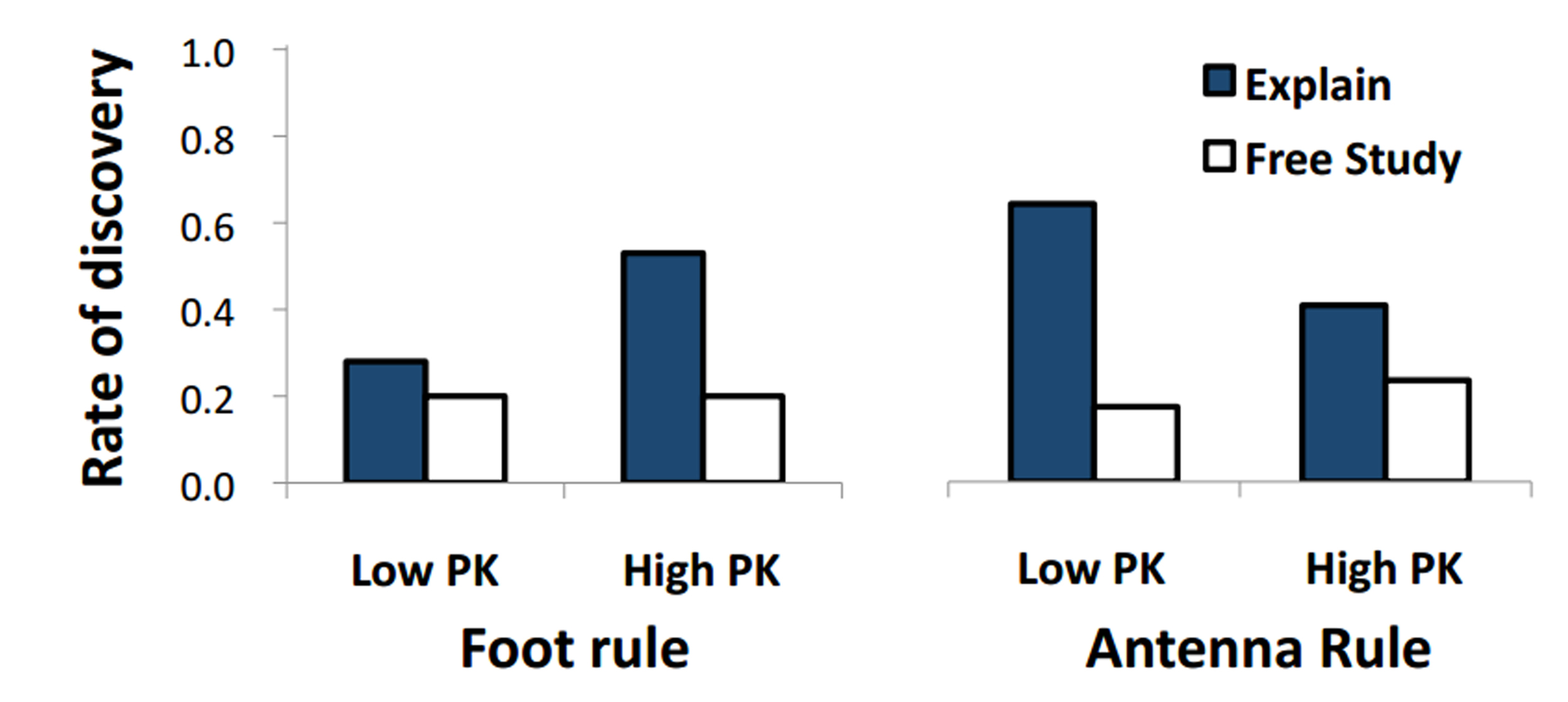Visual Learning: Explanation and Prior Knowledge
Concepts and Cognition Lab, UC Berkeley, 2009-2010; Research Assistant for Tania Lombrozo
Question: How does explaining what we see, and having prior knowledge impact the ways in which we learn visually about new things?
Role: I was involved with designing, creating stimuli for, implementing, and analyzing a series of online experiments to answer this question.
Discovery: In one study, participants were introduced to two categories of robots and had to discover the distinguishing characteristics, or rules, that defined the categories. They then categorized a series of new robots into one of the two categories. Depending on what rule the participants discovered and used (e.g. antenna length, color, foot shape), their categorizations would be accurate to different extents.
Insights & Interpretation: Explaining aloud to oneself during a learning task, and amounts of prior knowledge interact to influence our visual learning, particularly with respect to the types of rules that are discovered and applied in categorizing new stimuli.
When participants were told to explain aloud while studying the robots (as opposed to no directions), they were more likely to discover a rule by which to categorize the robots. But what rule they were likely to discover depended on how much prior knowledge was activated. In the low prior-knowledge conditions, these categories were given arbitrary names – Glorps and Drents – but in the high-prior knowledge conditions, they were designated as Indoor and Outdoor robots, which suggested a difference in foot type. Participants in whom this prior knowledge was activated AND who were told to explain, were the most likely to discover the rule that was 100 percent accurate – flat or pointy feet.
Read the paper (one variation of the experiment) here.


